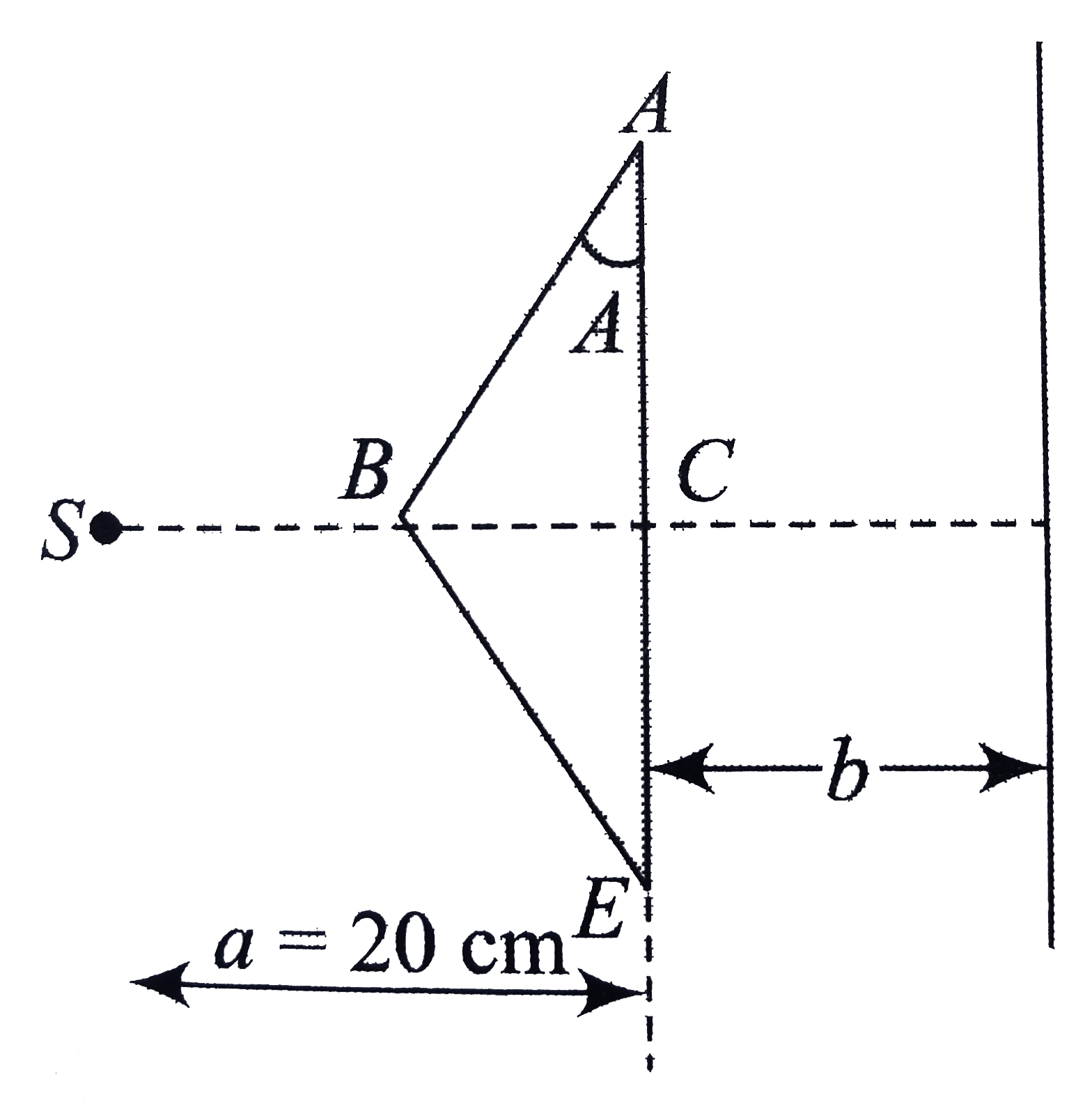Why coherent sources are required to create interference of light ? Explain how Fresnel biprism is used to obtain two coherent sources of light.
Step-by-Step Solution:
Step 1: Understanding Coherent Sources
- Coherent sources are those that emit light waves with a constant phase difference. This means that the waves maintain a fixed relationship with each other over time.
- For interference patterns to be observed, the path difference (Δφ) between the waves from the two sources must remain constant. If the path difference changes, the resulting intensity at any given point will fluctuate, making it impossible to observe a stable interference pattern.
Step 2: Requirement for Interference
- When two coherent sources are used, the intensity at any point where the waves meet will be constant over time. This is because the phase difference remains unchanged, leading to consistent constructive or destructive interference.
- If the sources are not coherent, the interference pattern will not be stable, and the intensity will vary, preventing the observation of clear fringes.
Step 3: Introduction to Fresnel Biprism
- The Fresnel biprism is an optical device used to create two coherent light sources from a single source. It consists of two prisms joined at their bases, forming a very small angle at the apex (approximately 30 minutes).
Step 4: How Fresnel Biprism Works
- Place a point light source (S) at the vertex of the biprism. Light from this source will strike the biprism and refract.
- The light rays will bend towards the base of the prism, creating two rays that appear to diverge from two virtual sources (S1 and S2) located on either side of the biprism.
- The two virtual sources (S1 and S2) act as coherent sources because the light waves they emit maintain a constant phase relationship.
Step 5: Observing Interference
- The light from these two virtual sources (S1 and S2) will overlap on a screen placed at a distance. Due to the constant phase difference, an interference pattern of bright and dark fringes will be observable on the screen.
- The fringe pattern results from the superposition of the light waves from S1 and S2, demonstrating the principle of interference.
- Coherent sources are those that emit light waves with a constant phase difference. This means that the waves maintain a fixed relationship with each other over time.
- For interference patterns to be observed, the path difference (Δφ) between the waves from the two sources must remain constant. If the path difference changes, the resulting intensity at any given point will fluctuate, making it impossible to observe a stable interference pattern.
- When two coherent sources are used, the intensity at any point where the waves meet will be constant over time. This is because the phase difference remains unchanged, leading to consistent constructive or destructive interference.
- If the sources are not coherent, the interference pattern will not be stable, and the intensity will vary, preventing the observation of clear fringes.
- The Fresnel biprism is an optical device used to create two coherent light sources from a single source. It consists of two prisms joined at their bases, forming a very small angle at the apex (approximately 30 minutes).
- Place a point light source (S) at the vertex of the biprism. Light from this source will strike the biprism and refract.
- The light rays will bend towards the base of the prism, creating two rays that appear to diverge from two virtual sources (S1 and S2) located on either side of the biprism.
- The two virtual sources (S1 and S2) act as coherent sources because the light waves they emit maintain a constant phase relationship.
- The light from these two virtual sources (S1 and S2) will overlap on a screen placed at a distance. Due to the constant phase difference, an interference pattern of bright and dark fringes will be observable on the screen.
- The fringe pattern results from the superposition of the light waves from S1 and S2, demonstrating the principle of interference.
Similar Questions
What is meant by coherent sources of light?
View SolutionAs a result of interference of two coherent sources of light, energy is
View SolutionTwo coherent sources must have the same
View SolutionTwo coherent source of light can be obtained by
View SolutionTwo light sources are coherent when
View SolutionHow did Fresnel construct a biprism in order to study interference of light ?
View SolutionTwo small angled transparent prisms (each or refracting angle A=1∘) are so placed that their bases coincide, so that common base is BC. This device is called Fresnel's biprism and is used to obtain coherent sources of a point source S illuminated by monochromatic light of wavelength 6000Å placed at a distance a=20 cm. Calculate the separation between coherent sources. If a screen is placed at a distance b=80 cm. from the device, what ist the finge which of fringes obtained (Refractive index of material of each prism =1.5.)

View SolutionA : When the coherent sources are far apart, interference pattern cannot be detected.
R : If two point coherent sources are infinitely close to each other, firinges appears very sharp.
View SolutionTwo light sources are said to be coherent if they are obtained from
View Solution(a) Why are coherent sources necessary to produce a sustained interference pattern ?
(b) In Young's double slit experiment using monochromatic light of wavelength λ, the intensity of light at a point on the screen where path difference is λ, is K units. Find out the intensity of light at a point where path difference is λ/3.
View Solution
